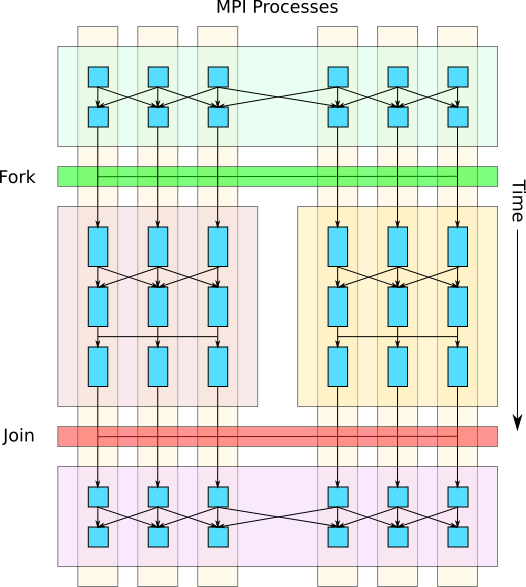Fork-Join
An AMReX program consists of a set of MPI ranks cooperating together on distributed data. Typically, all of the ranks in a job compute in a bulk-synchronous, data-parallel fashion, where every rank does the same sequence of operations, each on different parts of the distributed data.
The AMReX Fork-Join functionality described here allows the user to divide the job’s MPI ranks into subgroups (i.e. fork) and assign each subgroup an independent task to compute in parallel with each other. After all of the forked child tasks complete, they synchronize (i.e. join), and the parent task continues execution as before.

Fig. 5 Example of a fork-join operation where the parent task’s MPI processes (ranks) are split into two independent child tasks that execute in parallel and then join to resume execution of the parent task.
The Fork-Join operation can also be invoked in a nested fashion, creating a hierarchy of fork-join operations, where each fork further subdivides the ranks of a task into child tasks. This approach enables heterogeneous computation and reduces the strong scaling penalty for operations with less inherent parallelism or with large communication overheads.

Fig. 6 Example of nested fork-join operations where a child task is further split into more subtasks.
The fork-join operation is accomplished by:
redistributing MultiFab data so that all of the data in each registered MultiFab is visible to ranks within a subtask, and
dividing the root MPI communicator into sub-communicators so that each subgroup of ranks in a tasks will only synchronize with each other during subtask collectives (e.g. for
MPI_Allreduce).
When the program starts, all of the ranks in the MPI communicator are in the root task.